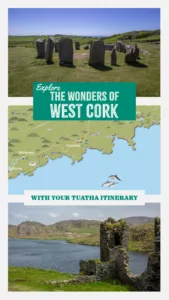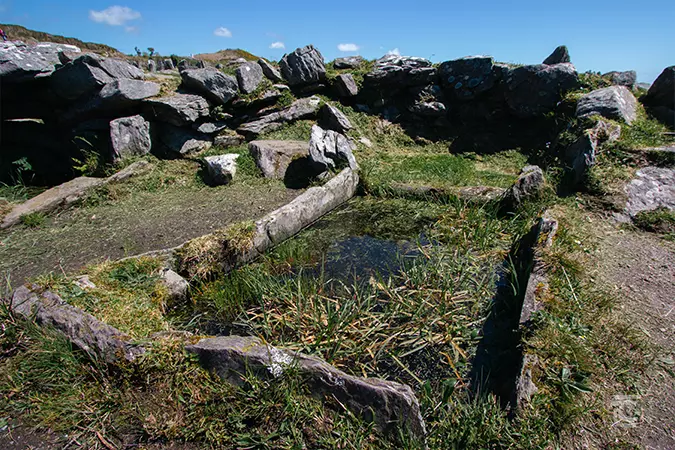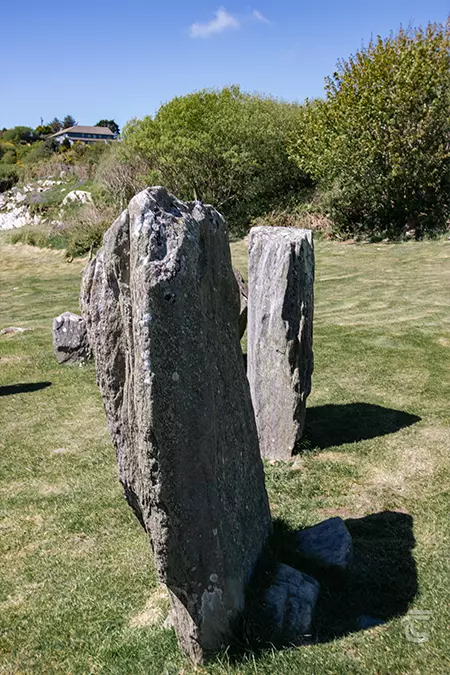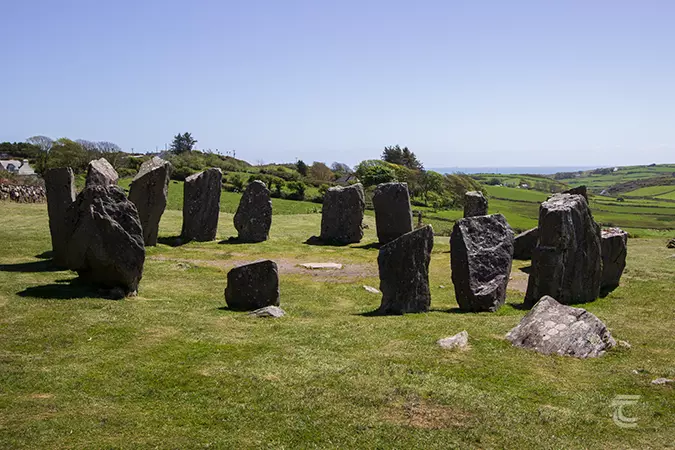Drombeg Stone Circle
Drombeg Stone Circle is one of the finest examples of this monument type in Ireland and today it attracts large numbers of visitors thanks to its picturesque setting. Like most of Ireland’s stone circles, the construction of Drombeg is thought to date to the middle or later period of the Bronze Age, approximately 3,000 years ago. The name Drombeg derives from the Irish Droma Bhig, meaning ‘the small ridge’.
Stone circles are often considered to be places of ritual and ceremony. Drombeg is aligned with the setting sun of the midwinter solstice (21st December), an important time in the ancient calendar as it marked the shortest day and longest night of the year. It was a time of rebirth and renewal as, from that point on, the days begin to grow. Drombeg’s celestial alignment was first noted by Boyle Somerville in 1923, who saw that when observed from the entrance to the circle, the sun is aligned with the position of the large recumbent (horizontal) stone.
For practical information about visiting this site Click Here
Drombeg Stone Circle is one of the finest examples of this monument type in Ireland and today it attracts large numbers of visitors thanks to its picturesque setting. Like most of Ireland’s stone circles, the construction of Drombeg is thought to date to the middle or later period of the Bronze Age, approximately 3,000 years ago. The name Drombeg derives from the Irish Droma Bhig, meaning ‘the small ridge’.
Stone circles are often considered to be places of ritual and ceremony. Drombeg is aligned with the setting sun of the midwinter solstice (21st December), an important time in the ancient calendar as it marked the shortest day and longest night of the year. It was a time of rebirth and renewal as, from that point on, the days begin to grow. Drombeg’s celestial alignment was first noted by Boyle Somerville in 1923, who saw that when observed from the entrance to the circle, the sun is aligned with the position of the large recumbent (horizontal) stone.
For practical information about visiting this site Click Here
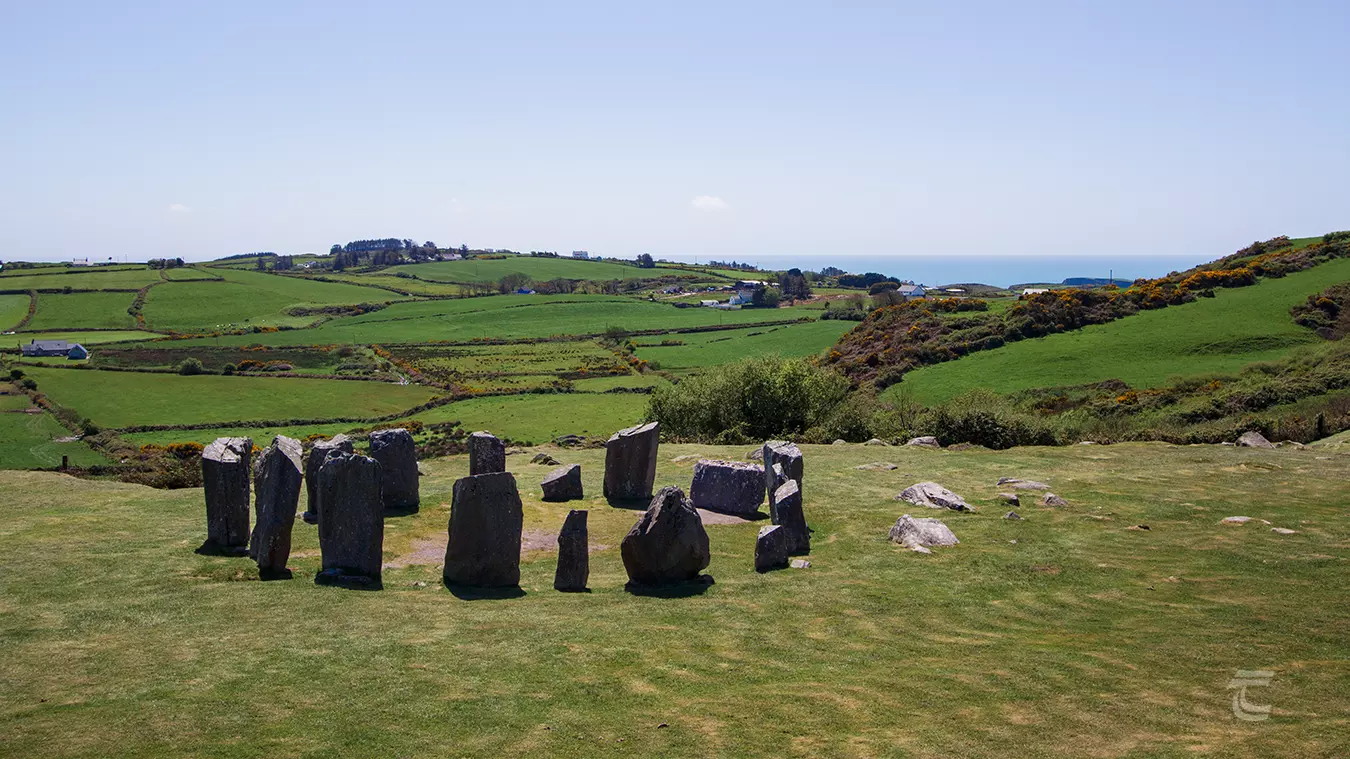
Drombeg Stone Circle • Cork
The Story of the Circle
Drombeg Stone Circle has long been linked with folklore and mythology, and the large recumbent stone has long been called ‘The Druid’s Altar’. The site was excavated in 1957, and archaeologists discovered that there was a compact gravelly surface within the circle, with a central pit containing the cremated remains of an adolescent child and a broken pot dating to 1124–794 BC.
Nearby the stone circle you can discover the stone foundations of Bronze Age huts and a well-preserved fulacht fiadh. Fulachta fiadh are relatively common features across the island. They generally consisted of a stone-lined pit or trough, that was filled with water. Stones were heated on a fire, and when the stones were red hot they were dropped into the water, eventually causing the water to boil. Their function has been long debated in archaeology, from the traditional view of cooking places, to dying clothes, bathing pools, sweathouses or saunas or possibly to brew ales or beer.
Upper left: the Fulacht fiadh, close to Drombeg Stone Circle • Lower left: surrounding farmland sweeps down to the Atlantic Ocean • Right: a close up view of the standing stones
Top: the Fulacht fiadh, close to Drombeg Stone Circle • Middle: a close up view of the standing stones • Bottom: surrounding farmland sweeps down to the Atlantic Ocean
Explore more sites on the Wild Atlantic Way
